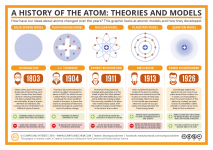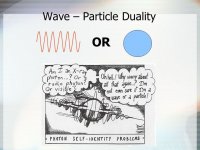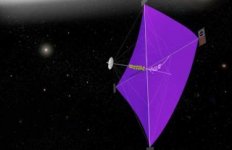Miles Mathis
You must mean he mentioned in "The Honest Scientist": https://thehonestscientist.com/miles-mathis/
"There is only one fundamental particle in Miles’s model of the Universe, which is about as small compared to an electron as an electron is to us, and it’s these particles zipping about that form the aether and charge."
Now Dark Energy i haven’t got my head around.
Hypothetical dark energy was introduced in the light of observations that suggest the expansion of the Universe is accelerating.
Whether or not the expansion is slowing down or speeding up depends on a battle between the gravitational pull of matter (most of which is dark matter) and the gravitational push of dark energy. Dark energy may be getting denser over time, which would mean it’s growing in strength.
However, the expansion of the universe may not be accelerating after all, in which case there would be no need to hypothesise the existence of dark energy.
The measurements & math that have lead to Dark Energy as a placeholder for whatever unknown is blowing up older models is but one of the observations that are shaking up our understanding of cosmos to quark (and hidden behind, whatever the quark is a symptom).
dave
dave
It’s the quantum soup now. Those health fanatics ruin everything!There is no ether, at least not since 1887.
Detection of small objects at a distance such as oort cloud objects is not easy. Not sure if we already have what it takes to detect small mile size stellar mass black hole even if there are billions of them forming a cloud around the milky way.Nope. Dust and gas clouds in space are visible, as they cast a shadow. Same for massive dark bodies, including black holes....
Spooky gravity, could it be gravity leakage from "close by" parallel universes.We are missing 80% of the mass in the measurable universe. It's got to be there but it's invisible as light goes straight through it....
;-)Why do you post rubbish? There's a torrent of misinformation here already, without posting non-physicists spouting complete rubbish as a reference.
This thread is doomed. Its a testament to some unfortunate reflections on humans:
few can grasp even basic physics
most would rather believe their own nonsense then do some basic education
on social media, anyone can post almost anything
I am very sure that also you cannot keep object and concept, physics and philosophy apart;-)
Science is trying to unite Quantum Mechanics, Classical Mechanics and Relativistic Mechanics. These three fields use different formulae which are hard to formulate in a single set of formulae to describe everything. Maybe, science has arrived, but mathematically, is impossible to unite these three fields of Mechanics. The difficult to describe areas are the boundaries between these three fields. Maybe, mathematically, this is an impossibility, and no algebraic expression can ever be derived to describe them. As a student, many years ago, I remember one of my mathematics teachers saying that some functions (single independent variable) have no integral. I am by no means saying this is the case here, but is it possible mathematically to unite such diverse fields of mechanics into one single set of formulae?
I will not be offended by criticism of what I wrote if it is incorrect. However, reply in a civilised way to avoid having this thread locked.
I will not be offended by criticism of what I wrote if it is incorrect. However, reply in a civilised way to avoid having this thread locked.
Last edited:
Electrons, the very particles which dance to our music, if projected onto two narrow slits, exhibit diffraction patterns characteristic of waves. This was done experimentally, hence, there is sufficient proof that electrons can behave like waves to produce a diffraction pattern. This experiment can be extended to other obstacles to study the trajectory of electrons after they encounter them. Statistically, the collective trajectories are those describe by wave behaviour with the amplitude representing the probability an electron takes that path. Louis De Broglie, in 1924, in his PhD thesis, postulated that an electron has an associated wavelength given by:
This established the idea that matter has a dual nature: that of particles and that of waves.
Quantum mechanics is based on this and other similar hypotheses. With its undeniable success, Quantum Mechanics cannot be discredited: it will remain valid within its area of application.
The wave nature of particles gave rise to the building of electron microscopes with their astounding resolving powers which is impossible to achieve using optical lenses.
Code:
wave length = h/(mv)
Where:
h: Planck's constant
m: mass
v: velocityThis established the idea that matter has a dual nature: that of particles and that of waves.
Quantum mechanics is based on this and other similar hypotheses. With its undeniable success, Quantum Mechanics cannot be discredited: it will remain valid within its area of application.
The wave nature of particles gave rise to the building of electron microscopes with their astounding resolving powers which is impossible to achieve using optical lenses.
Science is trying to unite Quantum Mechanics, Classical Mechanics and Relativistic Mechanics.
When it comes to a marriage of General Relativity and quantum concepts, we've yet to come up with a convincing theory.
However, there has been a marriage of Special Relativity and quantum concepts which has led to to Relativistic Quantum Mechanics. This theory can be applied to massive particles travelling at up to the speed of light, and has been sucessfully applied in high energy, particle accelerator physics.
https://en.wikipedia.org/wiki/Relat... formalism) also work with special relativity.
This established the idea that matter has a dual nature: that of particles and that of waves.
Light also exhibits this dual nature.
I like to think of photons and electrons as 'wavicles'.
Einstein's most revolutionary contribution to Physics was realising that light was not a wave, but a collection of "light quanta". It was the one thing that was specifically referred to in his 1921 Nobel Prize in Physics citation.
He later wrote: "It seems as though we must use sometimes the one theory and sometimes the other, while at times we may use either. We are faced with a new kind of difficulty. We have two contradictory pictures of reality; separately neither of them fully explains the phenomena of light, but together they do."
When I was still a youth in my middle teens, I remember one of my Physics teachers deriving the energy levels of hydrogen basing on the De Broglie wavelength equation. The De Broglie wavelength equation restricts electrons to discrete orbits making the permissible radii from the nuclear centre to the orbits quantised, that is, in discrete steps.
This derivation, while being accurate, does not account for the fine structure of energy levels as it does not include electron spin.
This derivation, while being accurate, does not account for the fine structure of energy levels as it does not include electron spin.
I remember one of my Physics teachers deriving the energy levels of hydrogen basing on the De Broglie wavelength equation. This derivation, while being accurate, does not account for the fine structure of energy levels as it does not include electron spin.
In physics, models require to become more sophisticated in order to accommodate new experimental discoveries.
Nowhere is this more apparent than in the development of the model of the atom.
Attachments
For light quanta the equivalent mass can be calculated using its energy, hf, and substituting in E=mc^2. That would be the "mass" of a light quantum.Galu said:Light also exhibits this dual nature.
Code:
For light, the energy e is given by: e = hf
Substituting in E = mc^2
hf = mc^2
==> m = hf/c^2
m: is the equivalent mass of a light quantum.The Compton Effect is the result of light colliding with electrons. The derivation for the Compton Effect involves using the above equivalent mass and using the conservation of momentum and the conservation of energy. I did this derivation during an examination when I was a student at the university. The level was undergraduate.
Yes, the famous Compton Scattering experiment shows that photons have momentum.
This was one of the key pieces of evidence physicists used to settle the dispute as to whether light behaved like a particle as well as sometimes like a wave.
The expression for the momentum of a photon is p = E/c which shows that the higher the energy of a photon, the greater its momentum.
This was one of the key pieces of evidence physicists used to settle the dispute as to whether light behaved like a particle as well as sometimes like a wave.
The expression for the momentum of a photon is p = E/c which shows that the higher the energy of a photon, the greater its momentum.
Attachments
The fact that photons have momentum promises a new way to travel through space:
Fancy some solar sailing? https://www.planetary.org/articles/what-is-solar-sailing
Fancy some solar sailing? https://www.planetary.org/articles/what-is-solar-sailing
Attachments
Galu said:The expression for the momentum of a photon is p = E/c which shows that the higher the energy of a photon, the greater its momentum.
Some mathematical "acrobatics", also academically known as, derivation:
Code:
p = E/c
Since E = mc^2, the following is implied:
p = mc^2/c
==> p = mc, where m is the equivalent mass of a photon.Arthur C. Clarke published his solar sail science fiction story The Sunjammer way back in 1964.
However the basic concept stretches back to 1608 with Johannes Kepler and his "heavenly breezes"!
NASA are on the case with the Solar Cruiser project: https://www.planetary.org/space-missions/solar-cruiser
However the basic concept stretches back to 1608 with Johannes Kepler and his "heavenly breezes"!
NASA are on the case with the Solar Cruiser project: https://www.planetary.org/space-missions/solar-cruiser
;-)
I suggest, for example: "space" is a result of interpreting: "objects" "to each other". Space is not "something", "wherein" "objects" "are". Exacter: "space" should not exist as word or term. Because: it does only exist as "concept", most misunderstand as "object" or "thing".
May be, I am more Leibniz than Newton or others;-)
... a reference to the section of discourse, which is not shown to us;-)
I suggest, for example: "space" is a result of interpreting: "objects" "to each other". Space is not "something", "wherein" "objects" "are". Exacter: "space" should not exist as word or term. Because: it does only exist as "concept", most misunderstand as "object" or "thing".
May be, I am more Leibniz than Newton or others;-)
... a reference to the section of discourse, which is not shown to us;-)
Last edited:
- Home
- Member Areas
- The Lounge
- Does this explain what generates gravity?


